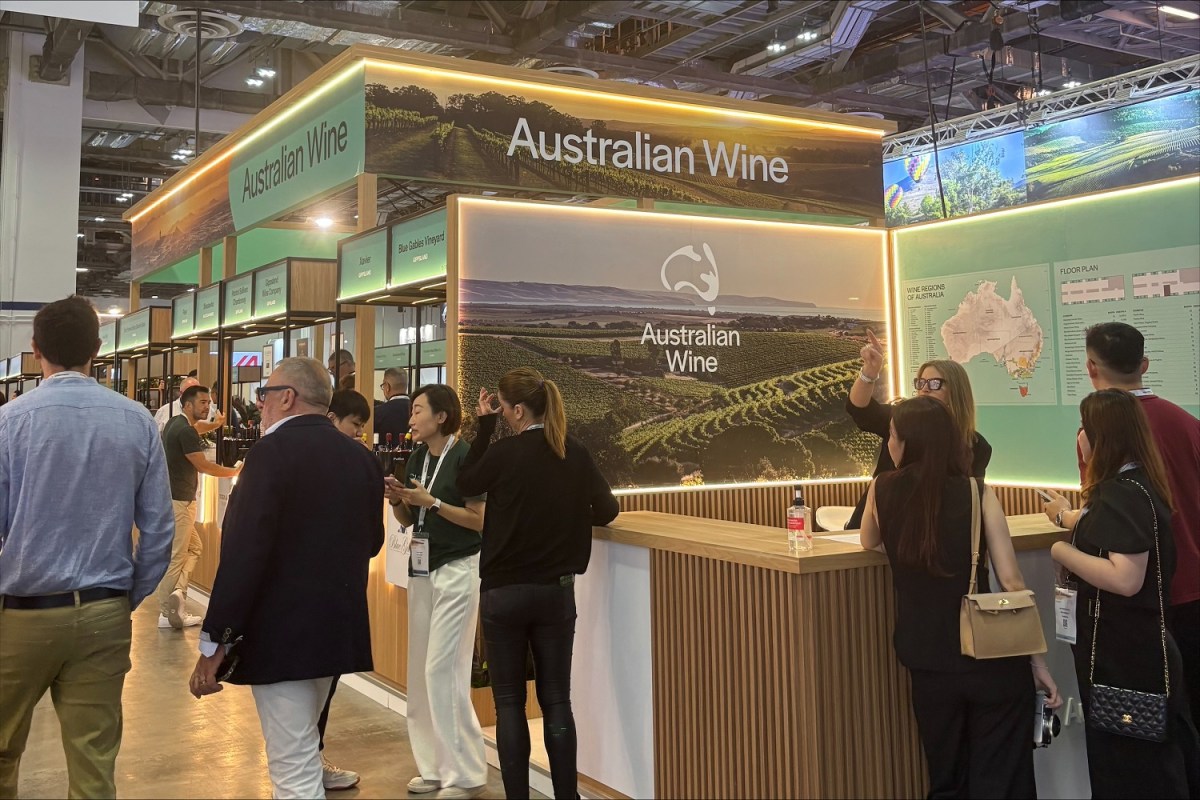Paul Turale, Marketing General Manager for Wine Australia, sat down with The Shout at Vinexpo Asia 2025 to discuss the show’s role in driving the success of Australian wines in emerging Southeast Asian markets and the impact of global uncertainties on wine trade.
Turale told The Shout the first two days of Vinexpo Asia 2025 were all about quality over quantity, with fewer crowds than anticipated at this year’s event.
“The quality of the people that have come through has been strong. In some ways it’s actually been a positive because it’s given the exporters and the wineries a chance to engage more with those who are in front of them and take the time to tell some of their stories.”
More than 60 wineries were under the Australia pavilion this year, showcasing over 400 wines from 30 of Australia’s 65 wine regions, focusing on the key message of diversity.
“When we take a Wine Australia stand like this one, it’s very much a national focus. We talk generally about the quality and diversity in Australian wines, but where the richness of the story really comes in is at the individual brand and regional level.
“Which is why, with such a big cohort here, it allows us to dig deep into what it is that makes Australian wine unique and special — and that’s ultimately what our strategy is based on.”

Turale praised the three-day expo for its ability to showcase both the “length and breadth of Australian wine”.
“Wine is incredibly competitive right around the world. I think our offer is a compelling one. So, this is really where we are able to show that to a wide audience, both here in Singapore and across the wider Southeast Asia region.”
Interest in Australian wine remains high
Despite a number of challenges facing the global wine market, Turale was glad to see that interest in wine made in Australia remains strong.
“Whether it’s because of economics or broader global trends — health, moderation, or wellness trends — alcohol generally is certainly finding it more difficult to maintain growth.
But out of that also comes opportunities driven by innovation. We’re seeing a lot of stylistic innovation over the last couple of years, which is really trying to be led by the market’s needs,” he said.
“A target for us is making sure that Australian wine is a choice when people are deciding what they might want to drink if they’re going to have alcohol.
“Where we have been strong historically is our diverse offering, but also being a very engaging and accessible country — whether that be through style, through price point, or the suitability of products for a whole range of occasions.”
Turale said this has been reflected in the wines grabbing people’s attention on the showroom floor.
“We’ve really been seeing over the last few years a growing demand and desire for Chardonnay and Pinot Noir in particular. However, it seems to be less about varietal mix and more about changing styles,” he told The Shout.

“With the re-emergence of the China market for Australia over the last 12 months, there’s been a growing desire and demand for white, sparkling and rosé wines.
Different markets are in different places, but if we are generalising, those lighter, more refreshing, crisper styles are certainly seeing a lot of interest this year.”
Impact of global uncertainty on wine producers
Despite the political challenges in recent years, Turale believes Chinese trade and consumers — as they always have — continue to love Australian wine.
Imported wine sales into China are approximately a third of what they were six years ago, added Turale. The Wine Australia Export Report data released in March showed that in the 12 months since the tariffs were lifted in 2024, Australia exported 96 million litres of wine valued at $1.03bn to the Chinese market.
“For us, our sales are almost back to what they were pre-COVID, which means we are taking a fair bit of share from others in that same market.
Based on the numbers, the relationship is good and strong. We’re certainly investing significantly in trade and educational support.”

However, Turale warns that ongoing economic uncertainty has emphasised the importance of market diversification into places like Vietnam, Malaysia and Indonesia, which present opportunities for continued growth.
“Purely on the numbers, we’re seeing the most significant growth in Thailand. We believe this is driven by tourists, so there’s still a lot of work to do with establishing wine as a beverage of choice for Thai people and their culture.”
“There’s a lot of uncertainty, whether it be from China or other parts of the world. It’s not just wine — it’s across all trade, and it’s impacting sentiment.
I think we’re in a good place, but you never take anything for granted. We want to have Australian wine available to everyone, everywhere.
Ultimately, we need to do it eyes wide open and try to make sure we manage risks at the same time.”
Future prospects for Australian wine
Ongoing competition among the world’s top wine producers for market share continues to place pressure on Australia’s wine producers. However, Turale said flexibility is the key to survival.
“If the EU decides that the US is no longer a good place to sell wine, they’re going to look for other markets, and competition dynamics will change.
At the moment, we can just try and react and be as flexible as we can, knowing that any plan could change tomorrow.”
Above all concerns, Turale told The Shout that optimism for the future could be felt across the whole of the Wine Australia pavilion.
“There is a view among the exhibitors that the wines we’re making out of Australia are probably the best we’ve ever made.
I think the styles continue to evolve to reflect market demand. And I think on that basis, the future is bright.”


